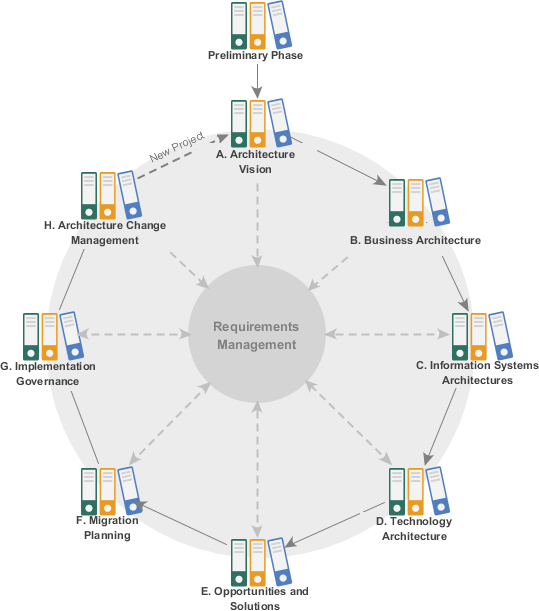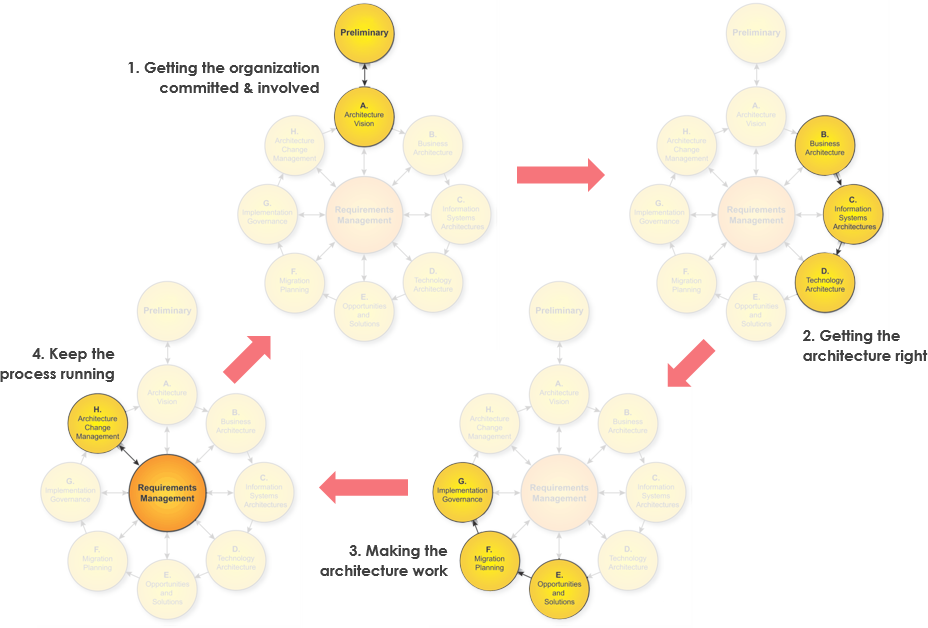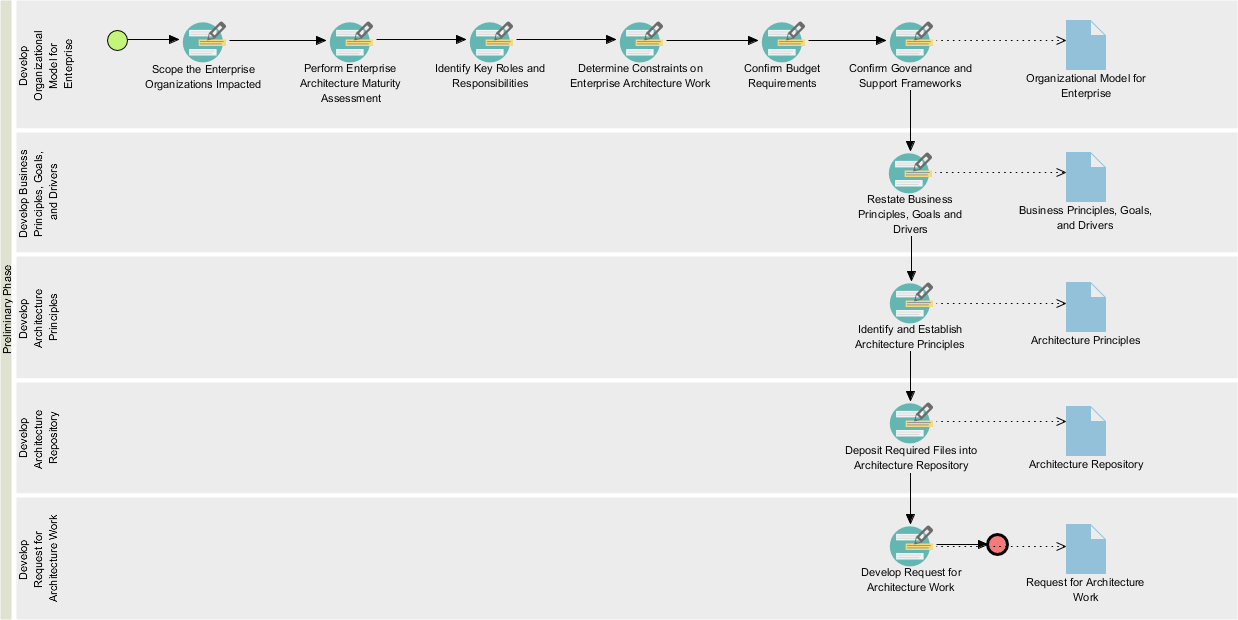Simplify Enterprise Architecture with TOGAF ADM and Visual Paradigm
As an enterprise architect, you understand the importance of having a comprehensive and well-designed enterprise architecture.
The Open Group Architecture Framework (TOGAF) is a widely-adopted framework that provides a structured approach to enterprise architecture development and management. In this article, we will explain what TOGAF is, what the Architecture Development Method (ADM) is, and how to use Visual Paradigm to manage TOGAF processes.
What is TOGAF?
TOGAF is a framework for enterprise architecture that provides a structured approach to the development, design, implementation, and governance of an enterprise’s information technology (IT) architecture. It is designed to support organizations in the development and management of their enterprise architecture, and to provide a common language and methodology for architecture development and management.
What is the TOGAF ADM?

The Architecture Development Method (ADM) is a phase-based approach that provides a roadmap for developing and managing enterprise architecture. TOGAF ADM comprised of the following phases, which are typically referred to by the letters A to H:
- Preliminary
- A. Architecture Vision
- B. Business Architecture
- C. Information Systems Architecture
- D. Technology Architecture
- E. Opportunities and Solutions
- F. Migration Planning
- G. Implementation Governance
- H. Architecture Change Management
These phases are a high-level overview of the steps involved in developing and managing an enterprise architecture using TOGAF. The Architecture Vision phase defines the overall approach to the architecture development, while the remaining phases focus on the development and management of specific aspects of the enterprise architecture. The phases are designed to be iterative, allowing for the enterprise architecture to be continually refined and aligned with the needs and goals of the business.

How to use Visual Paradigm to manage TOGAF ADM activities
Visual Paradigm provides a comprehensive tool for managing the Architecture Development Method (ADM) activities in TOGAF. The TOGAF ADM Guide-Through feature in Visual Paradigm supports the development and management of an enterprise architecture by providing a structured and controlled approach to the ADM.

With Visual Paradigm, users can easily create and manage the different phases of the TOGAF ADM. The tool supports the creation of diagrams, documents, and models that are aligned with the TOGAF ADM and helps ensure that the architecture is aligned with the needs and goals of the business.
Visual Paradigm also provides a range of collaborative tools, such as shared workspaces and team collaboration, which make it easy for multiple stakeholders to work together on the development and management of the enterprise architecture. This helps to ensure that the architecture is developed and managed in a structured and controlled manner, and supports effective collaboration and communication among the stakeholders involved.
Conclusion
TOGAF is a widely-adopted framework for enterprise architecture development and management, and the Architecture Development Method (ADM) provides a structured approach to architecture development and management. By using Visual Paradigm to manage TOGAF processes, enterprise architects can simplify the development and management of their enterprise architecture, and ensure that the architecture is aligned with the needs and goals of the business.

